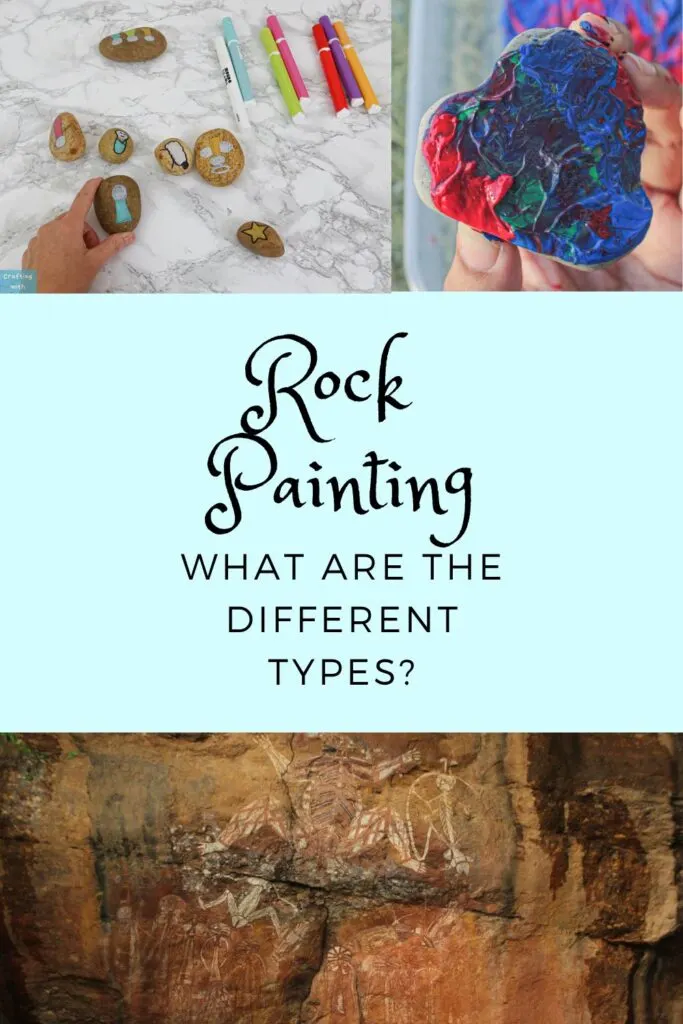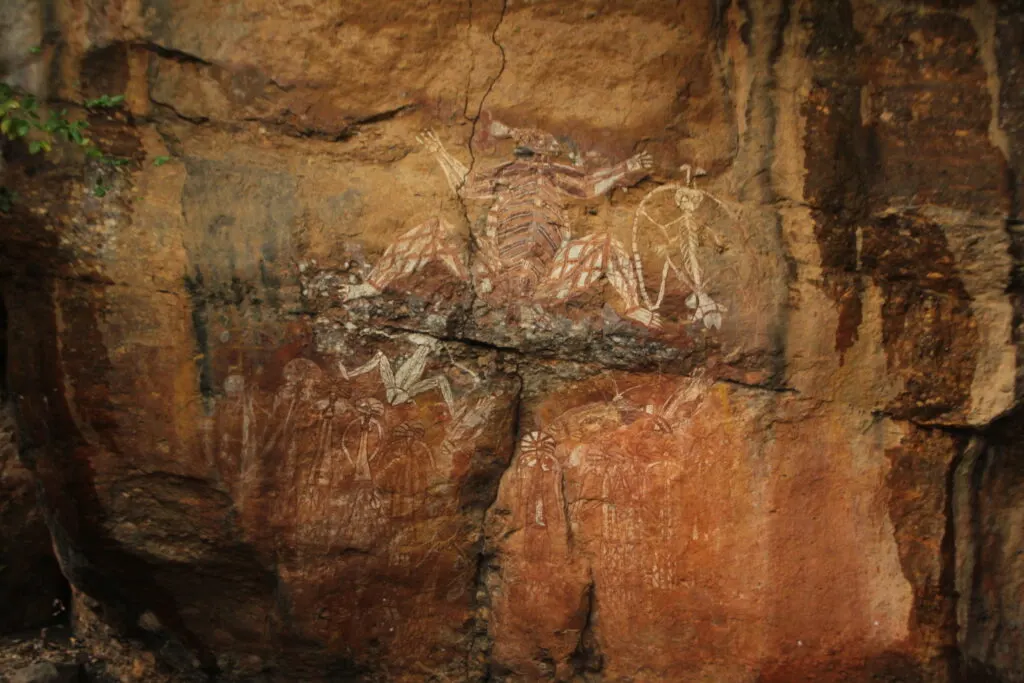Rock painting is an ancient art form that has been practiced for thousands of years. From prehistoric cave paintings to modern-day street art, the practice of painting on rocks has been used as a means of artistic expression, storytelling, and communication across cultures and time periods. Today, rock painting is experiencing a resurgence in popularity as a fun and creative hobby for people of all ages, especially kids!
There are many different types of rock painting techniques that artists can use to create unique and beautiful designs. Some techniques involve painting directly onto the surface of the rock, while others involve using stencils, transfers, or other tools to create intricate patterns and designs. Some artists also use a combination of painting and carving to create three-dimensional designs that really stand out. Whether you are a beginner or an experienced artist, there are many different types of rock painting techniques to explore and experiment with.

Understanding Rock Painting
Rock painting is an ancient art form that has been practiced for centuries. It can be found in many cultures around the world and is still popular today. Understanding the different types of rock painting can help you appreciate the art form and its history.
Petroglyphs
Petroglyphs are rock carvings that are made by chipping or carving away the surface of the rock. They are usually found in areas where the rock is hard and durable. Petroglyphs can be found all over the world and are often associated with ancient cultures.
Pictographs
Pictographs are rock paintings that are made by applying pigments to the surface of the rock. The pigments can be made from a variety of materials, including charcoal, clay, and plant dyes. Pictographs are often found in caves and rock shelters and can be very detailed and intricate.

Geoglyphs
Geoglyphs are large-scale rock paintings that are made by removing the surface of the rock or soil to create a design. They are often found in desert areas and can be seen from the air. The most famous geoglyphs are the Nazca Lines in Peru, which are believed to have been created by the Nazca culture between 400 and 650 AD.
Graffiti
Graffiti is a type of rock painting that is created by spraying or painting designs or words onto the surface of the rock. Graffiti can be found all over the world and is often associated with urban areas. While some people view graffiti as a form of vandalism, others see it as a legitimate art form.
So what would you call rock painting for kids? I would probably cluster this into the “graffiti” form of rock painting.

Types of Rock Painting
Pictograph
Pictographs are rock paintings created by applying pigments directly to the rock surface. Different types of pigments such as red ochre, yellow ochre, black charcoal, and white kaolin clay are used for painting. Pictographs often depict human figures, animals, plants, and other objects. They are found in various parts of the world, including North America, Europe, Africa, and Australia.
Petroglyph
Petroglyphs are rock carvings made by pecking or scratching the rock surface with a sharp tool. Petroglyphs are found in many parts of the world, including North America, South America, Europe, and Australia. They often depict human figures, animals, plants, and other objects.
Pecked Curvilinear Nucleated
Pecked Curvilinear Nucleated (PCN) rock art is a type of petroglyph that is characterized by a series of small, closely spaced, circular depressions that are surrounded by curvilinear lines. PCN rock art is found in many parts of the world, including North America, South America, Europe, and Australia. The meaning of PCN rock art is not well understood, but it is believed to have been created for religious or ceremonial purposes.
Intaglio
Intaglio rock art is a type of petroglyph that is created by carving or incising the rock surface. Intaglio rock art is found in many parts of the world, including North America, South America, Europe, and Australia. They often depict human figures, animals, plants, and other objects. The meaning of intaglio rock art is not well understood, but it is believed to have been created for religious or ceremonial purposes.
Materials Used in Rock Painting
Natural Pigments
Rock painting is an ancient art form that has been practiced by various cultures around the world. One of the essential materials used in rock painting is natural pigments. These pigments are derived from natural sources such as minerals, rocks, and clay. Natural pigments are preferred over synthetic pigments because they are eco-friendly and have a rustic look.
Some of the popular natural pigments used in rock painting are:
- Ochre: This pigment is derived from iron oxide and is available in various colors such as red, yellow, and brown.
- Charcoal: It is made by burning wood and is used to create black or dark gray shades.
- Clay: It is a natural pigment that is available in different colors such as red, yellow, and brown.
Animal Fats
Animal fats are another material used in rock painting. They are used as a binding agent to mix the natural pigments and make them adhere to the rock surface. Animal fats such as tallow, lard, and fish oil are commonly used in rock painting.
Plant Extracts
Plant extracts are also used in rock painting to create different shades and colors. These extracts are obtained from various parts of plants such as leaves, flowers, and roots. Some of the popular plant extracts used in rock painting are:
- Indigo: It is obtained from the leaves of the indigo plant and is used to create blue shades.
- Madder: It is derived from the roots of the madder plant and is used to create red and pink shades.
- Woad: It is obtained from the leaves of the woad plant and is used to create blue shades.
Preservation of Rock Paintings
Preserving rock paintings is crucial to ensure that they remain intact for future generations to appreciate and learn from. Rock paintings can be damaged by natural factors such as weathering, erosion, and biological growth, as well as human activities such as vandalism and pollution.
One of the most effective ways to preserve rock paintings is to limit human contact with them. This can be achieved by restricting public access to the sites, or by placing protective barriers around the paintings. In some cases, replicas of the paintings can be created for public viewing, while the original paintings are kept in a controlled environment to prevent further deterioration.
Another important factor in preserving rock paintings is the management of the surrounding environment. This includes controlling the growth of vegetation around the site, as well as managing the water flow and drainage to prevent erosion and weathering. Additionally, the use of pesticides and other chemicals should be avoided, as they can cause damage to the paintings.
Regular monitoring and maintenance of the site is also necessary to ensure that any damage or deterioration is identified and addressed promptly. This can include cleaning the paintings to remove dirt and debris, repairing any cracks or chips, and applying protective coatings to prevent further damage.
Overall, preserving rock paintings requires a combination of protective measures and ongoing maintenance to ensure that these valuable cultural artifacts are preserved for future generations to enjoy and learn from.
Contemporary Rock Painting
Contemporary rock painting is a modern art form that has gained popularity in recent years. It is a creative way to decorate rocks and express oneself. This type of rock painting involves using a variety of materials such as acrylics, markers, and spray paint to create unique designs on rocks.
Garden Rock Painting
One of the most popular forms of contemporary rock painting is garden rock painting. Many people paint rocks and use them to add a decorative touch to their gardens. These painted rocks can be used to create a pathway or to add color to a flower bed. Some people even use them to create garden art.
You can see more “garden rock painting ideas” with a few posts below.
Rock Painting with a simple Acrylic Dip technique

Therapeutic Rock Painting
Another form of contemporary rock painting is therapeutic rock painting. This type of rock painting is often used as a form of therapy to help people relax and unwind. It is a great way to relieve stress and anxiety. Therapeutic rock painting involves using calming colors and patterns to create a sense of peace and tranquility.
Overall, contemporary rock painting is a fun and creative way to express oneself. It allows people to use their imagination and create unique designs that reflect their personality and style. Whether it’s used for garden decoration or as a form of therapy, rock painting is a great way to add a personal touch to any space.
Rock painting for kids
Painting rocks is a great past time for children. It’s a great way to teach kids about using nature to create art! Don’t forget about the holidays too. We even created a DIY Nativity Scene with painted rocks.

Also check out our easy tutorial on creating Cat rock painting for kids!
Check out all our related Rock painting posts below:
Rock Painting with a simple Acrylic Paint Dip Technique
Christmas Rock Painting with a Nativity Scene
I hope this post has enlightened you to understand more about rock painting and how it began.
Happy crafting friends!

Leave a comment